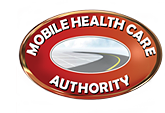CHASSIS
Whether self-driven/propelled or trailer, the chassis is an exterior frame (shell or skin), which supports an interior "body" or box holding the custom designed and built mobile clinic. Chassis are most often built by first-stage manufacturers such as Ford, GMC or Winnebago. The chassis usually includes a structural under-frame with engine and radiator, gearbox and transmission, wheels (axles and suspension) and drive cab operating features.
Building out the body, or interior clinic, requires specific engineering expertise by health specialty (second-stage "body-builders") to fulfill the chassis vocational (dental or medical) application. Some manufacturers can custom build both the chassis and body. In both cases the end goal is to deliver the client a completely turn-key mobile clinic.
CLINIC CONVERSIONS
This is frequently done on a low-mileage used vehicle (dental, medical, or other specialty use) by building a new body (referred to as retrofitting, refurbishing, or modifying) based on a new owner's preferred specifications and health applications. Walls, doors, cabinets, bathrooms – all can be removed, added, or moved; and, new equipment installed. Conversion can often be a less expensive option than buying brand new (from chassis up).► Additional Resources:
COMMERCIAL DRIVER'S LICENSE (CDL)
A CDL is a license that ensures an individual has been evaluated under uniform testing procedures and has displayed the basic knowledge and skills to operate a commercial vehicle/mobile clinic (i.e., trucks, tractor- trailers, buses/coaches). Most RV style mobile clinics are under 26,001 pounds and thus, do not require a CDL. Issued by individual states, most states require a CDL for a mobile clinic that exceeds 26,001 pounds. In some states, the weight is lower. To determine if your driver(s) require a CDL, request a copy of your state's CDL manual. Drivers are not required to obtain a separate Federal license.
► Federal standards require states to issue a CDL according to the following classifications:
- Class A – any combination of vehicles with a GVW (gross vehicle weight) of 26,001 or more pounds provided the GVW of the vehicle being towed is in excess of 10K pounds.
- Class B – any single vehicle with a GVW of 26,001 pounds, or any such vehicle towing a vehicle not in excess of 10K pounds.
- Class C – any single vehicle, or combination of vehicles, that does not meet the definition of Class A or B, but is either designed to transport 16 or more passengers, including the driver, or is placarded for hazardous materials.
